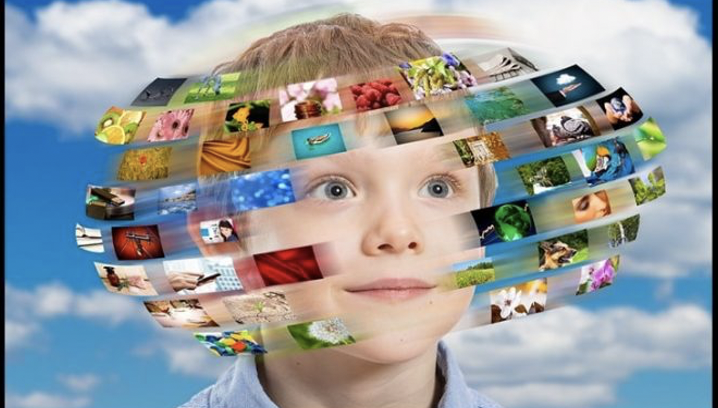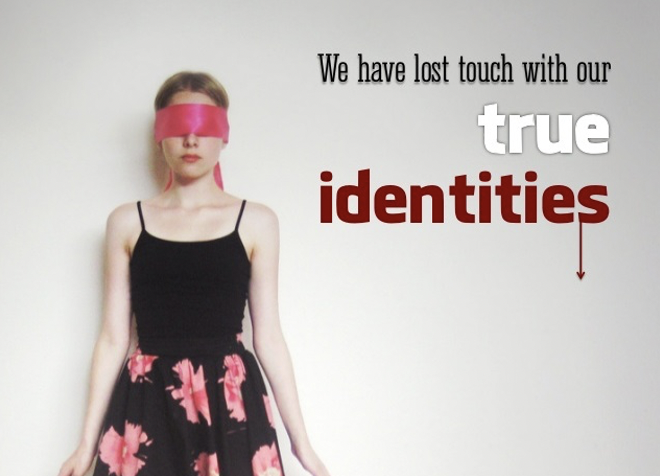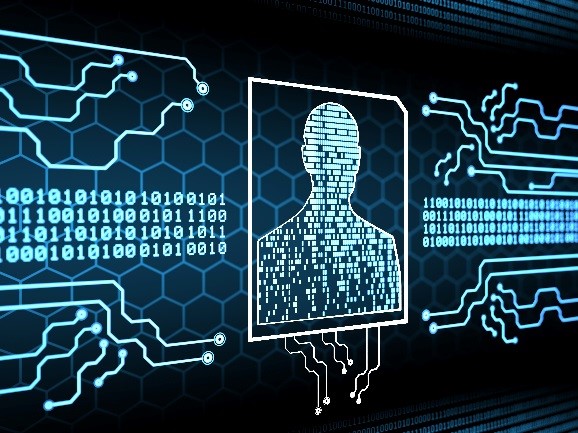Abstract
Technological aspects such as social media have a great influence on the formulation of one’s identity. The decision-making process involves analyzing one’s political views and choosing the appropriate social networks to represent them. If used properly, cyberspace can help mature individuals connect with like-minded individuals. Despite their positive effects, social media platforms can also cause problems and issues if they are used carelessly. This paper aims to answer the following question: What are the various ways in which social media can help users form their identities? It is a qualitative research essay; therefore, the previously available literature is considered for carrying the collection of relevant data and analysis. Perspectives of various theorists have been discussed and mainly, they have divided opinions regarding the positive or negative influence of technology over human identity. It concludes that social media exert a great deal of influence over individual identities as people join and identify themselves with like-minded approaches displayed over social media.
____________________________________________________________
Introduction
Social media platforms allow users to share content and express their opinions on a topic. They also facilitate interaction and communication processes that are not restricted by time constraints. They can also help other users by answering their questions and providing feedback. Through social media, users can interact with each other and communicate with each other. From a psychosocial perspective, social networks can be defined as digital spaces where users can manage their social identity and organization. Social networks allow the creation of hybrid social networks that are made up of real connections and virtual ones. The hybrid nature of social networks leads to two faces, one for the virtual world and one for the real world. There are various ways to alter the way that social networks work, but it is also true that they can be easily manipulated by external intervention (Pan et al., 2017). Different identities can also affect our political views. This process of deciding upon one’s political views is part of the decision-making process. If the social networks make it possible for us to manage with the limited effort the expansion of weak ties, then we may behave with weak ties in the same way as with strong ties. If used responsibly, social networks can provide mature people with an opportunity to interact with like-minded individuals and conduct business. However, they can also cause problems and difficulties if they are used in an irresponsible way. In the current paper, the aspect of technology and identity formation has been explored using qualitative research and textual analysis. The research question for the current paper is ‘In what ways, social media is involved in the identity construction of its users’?
Technology and Human Identity

Figure 1: Technology shaping the human identity (Emma, 2017)
This research has used the qualitative approach to explore the answers to the question. I interviewed my friend’s father, Mr. Arthur, who served as a researcher in the School of Critical Studies, Germany. I inquired about social media, digitalization, and identities. He explained that in the current era, currently, social media platforms have the power to formulate specific thought processes among the masses. Most users are young people, political, social, or economic agendas can polarize people, inculcate antagonistic philosophies in their minds by storytelling, by exemplifying others, or narrating one’s own stories. This has a great impact in identifying a person to others with similar inclinations towards specific aspects. For instance, if I am in support of LGBT rights, posts advocating their rights will surely attract my attention and will get like and share also. Mr. Arthur continues to explain that the same goes for business as brand identity is another significant aspect that is built using social media and the customer’s preferences are used to modify and establish an effective identity for seeking socio-economic benefits.
Social Media

Figure 2: Social media dependence and transformation of individual identities (The New Yorker, 2019)
On social media, people communicate with each other through text, visual material, and links to other sites. Stories are told through these platforms, sometimes with a specific audience in mind. People engage in a process known as storytelling. When individuals tell stories about who they are, they can connect with their world and make sense of it. Through these stories, one can also create recognizable constructs from one’s daily life. When people share their life stories in various forms, they do so in dialogue with other people. Stories are also crucial to forming identities. For political parties, telling stories about what they have done can help explain their goals and intentions. Collective narratives are formed by people who tell their own life stories. They can use these stories to counter or corroborate a commonly shared storyline. This kind of positioning can help people tell an audience how they would like to be perceived (Mellado & Hermida, 2021). For instance, if someone is dissatisfied with how being non-American has been perceived, they might insist that other people of different backgrounds can also be American. In political speeches, the speaker uses a story to tell their audience about how they wish to be viewed.
The online process is used by psychologists and sociologists to study how people communicate and write in various contexts. Facebook is an interesting venue for studies on how people communicate their identities online. The platform is focused on individual identities and its users have rich opportunities to create their preferred self-image in various ways. As a social platform, Facebook allows users to create storylines that they can paraphrase or reword existing ones. This feature also allows users to interact with other people through their messages. How do users use these tools to communicate their identities? It’s also useful to study how people communicate with political messages through these features. How do users respond to the messages of political narratives that they consume? This study will involve collecting data on various aspects of the platform. Despite how integral social media has become in people’s lives, it is still necessary to study its various facets in order to answer some of the most important questions. Despite the diversity of social media platforms, its core purpose is to enable people to connect and share content. It is often regarded as an enhancement tool that allows people to connect and create a larger social network. Through social media, people living on different continents can connect and communicate with each other. This allows individuals to connect and develop their personal and professional development. According to Pan et al (2017), social media users are also content producers. In his study, he argues that the user’s involvement in the communication process is similar to that of a producer. As per the researcher, many people use social media to broadcast problems and to voice their opinions. There has also been a relationship between social media and the creation of social relationships. The function of social media can be best understood in the framework of a comprehensive theoretical study proposed by Baccarella and colleagues in 2018 that includes Conversations, Relationships, Presence, Sharing, Reputation, Identity, and Groups (Baccarella et al., 2018).
The characteristics of social networks allow users to analyze the connections of other users. This allows them to make their own social media platforms. Through their connections, one can identify various opportunities that are not immediately apparent to the average person. The second one is impression management, which allows one to present themselves in a way that is representative of who they are. The example is to make the social network more personal and distinct. While it is clear that social media platforms cannot tell us much about public opinion in general, they can be valuable fields for studying how these platforms shape public opinion. The political views of people are shaped by their various identities. Some people are more conservative than others. A social media platform is a network that enables users to create digital identities for their friends and to share their photos and events with them. Popular social networks include Facebook, Google Plus, and LinkedIn.
As per Daniel, the rise of social media has created an environment where people are more likely to socialize and work together regardless of their distance. There are a number of platforms such as Facebook and Twitter that cater to this need. The social systems that shape our lives are the ones that we should regularly examine in order to get a better understanding of people with cultural and social dimensions. There is a need for more scientific methods to study how communities are formed through the various platforms that we use nowadays. This knowledge will help us create effective and efficient systems that can provide useful information to users. It will also help maintain a safer and more fun online environment. In virtual environments, people can interact with others wherever they are and in whichever form they prefer. This allows people to form groups of varying sizes. The rise of virtual environments in various fields has become widely popular. Due to their freedom, people are more inclined to express themselves on virtual platforms.
Oksanen and colleagues (2020) stated that future generations seem to spend so much time on social media that they become more active and less healthy. There are so many fake profiles and different identities that people seem to use and adopt. Thus, the social media platform brings about hierarchies and discriminations. It also adds a psychological dimension to the body, which is a part of a larger body. The identity or self is a psychological dimension that comes from belonging to a social, emotional, or political body. It can also be defined as belonging to a certain group or individual. Individuals might have different identities due to the varying layers of communication that they encounter in society. Through virtual networks, they can connect with each other in different ways(Oksanen et al., 2020). The hazard of stereotyping also increases when people adopt identities that are similar to each other.
While virtual communities are more focused on online activities than offline ones, they are typically not equipped with the necessary technology to support their activities. There are few online relationships that are as deep as surfing the net. The Internet allows people to connect and communicate without having to address or speak to other people. They can also create their own identity by sharing any information that they desire. In virtual worlds, people can create their own fictionalized profile to communicate with another user. They can also hide their gender or social status in order to establish an interaction.
A digital identity is a concept that refers to the norms of behavior that are blended with technology. It includes social media and electronic environments. A digital identity should have an ethical dimension and be able to criticize and establish an ethical interaction with the environment. It is expected that a person with a digital identity act ethically and collaboratively when they interact with other users on virtual platforms. The various dimensions of digital identity help define commercial activities that can be performed in virtual environments. Various forms of communication, such as SMS, electronic mail, and mobile communication instruments, have been used to enhance the communication process. Due to the increasing importance of digital literacy, people are required to use technology more in their studies and activities. Due to the increasing importance of technology in education, both commercial and non-profit organizations have started to use it in their teaching and learning processes.
Individual identities

Figure 3: Confusion regarding individual identities (Janae, 2018)
A study conducted on Facebook usage among high school students in Western cultures revealed that their identities are fluidly intertwined. Young people tend to project offline identities onto screens when interacting with social media sites. Studies also suggest that social media platforms promote the idea of self-conscious crafting. However, feedback on self-presentations indicates that these are legitimate and validate identity claims(Sharon, 2021). These online identities are constructed in collaboration with peers, which can affect the way they feel about themselves.
The desire to reproduce oneself on social media platforms is widespread. This is evidenced by the various strategies used to depict sexually desirable forms of femininity and masculinity. Social media platforms allow users to express themselves in various ways, such as by choosing backgrounds and posing in various ways. They can also help youth construct identities that are more representative of themselves(Álvarez Monsiváis, 2021). As teenagers express their sexual content through social media, their bodies are increasingly being consumed by commercial media. As per this trend, girls who use Facebook often show signs of self-objectification.

Figure 4: Women Objectification in Technology (Berberick, 2010)
According to Erik Storlie, social networking can be very addictive. He explained that it can harm students. Louis Komjathy, a religious studies professor, said that students’ dependence on social media could negatively affect their concentration. Keith Campbell and Jean Twenge wrote about the link between narcissism and social media in their book “The Narcissism Epidemic.” Campbell and Twenge stated that “social networking sites reinforce narcissism in endless loop users are more likely to be connected with people who are more narcissistic than the average person”(Binetti, 2020).
While social media can be a negative influence on student well-being, it can also be a valuable resource for learning and development. For example, social media can help students develop and sustain authentic relationships. It can also provide opportunities for them to discuss what they have learned in their classes and activities. Laurie Patton, the dean of Duke’s College of Arts and Sciences, discussed how social media can enhance both academic and community engagement. During her time at Duke, she noted that students can connect with each other through global study groups. In 2012, Mark Paine and Storlie noted that social media provided students with a way to connect and organize their service-learning projects (Dalton & Crosby, 2013).
while many social media platforms have provided a variety of ways to communicate, digital literacy has always been a requirement in social environments. According to Dalton and Crosby (2013),” being able to communicate with other users is also beneficial for digital multiuser environments as it allows one user to convey what information they want to another user”. Due to the nature of digital platforms, it is important that users avoid disregarding the fact that an attitude or transaction can be executed in the digital environment(Dalton & Crosby, 2013). Although social media and internet users are virtual, they should not act in ways that harm the interests of others. Online bullying and defamation are two examples of how virtual environments can affect the interests of others. Transactions in digital environments are subject to various punishments depending on the laws and regulations. These include bans on selling or promoting a product that is prohibited by law and activities that encourage suicide or bullying. Although there are some limitations to the digital environment, people still have rights and liabilities when they express themselves freely. These rights and liability include the rights to discuss topics that they disagree with, as well as the rights to express an opinion on social media platforms.
Pan and colleagues (2017) emphasized that social media platforms should encourage members to regularly use their platform in order to achieve both exploration and exploitation. Service providers should also step up their efforts in community building to enhance the communication between their users and groups (Pan et al., 2017). This can help foster social identity by helping people form a group and provide information about the competition and other similarities between various groups.
Conclusion
Overall, social media can help transform the way social or digital identities operate. This includes helping people become more engaged with their activities and approaches. Creating a more accessible and sociable environment for users is a top priority for the University. Through social media, users can reach out to people with similar perspectives in order to provide them with the necessary information that can rationalize them. The potential of social media to improve effectiveness is enormous, however, is problematic. In short, this research has found that social media has influence over every aspect of individual life including gender, social life, human rights, political rights, or education.
References
Álvarez Monsiváis, E. (2021). Race-gender intersectionality in Mexican digital news on Kamala Harris. Convergencia Revista de Ciencias Sociales, 28, 1–26.
Baccarella, C. V., Wagner, T. F., Kietzmann, J. H., & McCarthy, I. P. (2018). Social media? It’s serious! Understanding the dark side of social media. European Management Journal, 36(4), 431–438.
Berberick, S. N. (2010). The objectification of women in mass media: Female self-image in misogynist culture. The New York Sociologist, 5(2), 1–15.
Binetti, S. (2020). Gender in the digital age: Exploring innovative practices and women’s involvement. Freedom from Fear, 2020(16), 86–98.
Dalton, J. C., & Crosby, P. C. (2013). Digital identity: How social media are influencing student learning and development in college. Journal of College and Character, 14(1), 1–4.
Emma, I. (2017, November 5). How Technology Influence Our Identity? | Technologies & Personalities. Mirch Masala Tv | Showbiz News. https://www.mirchmasalatv.com/technology-influence-our-identity/
How Social Media Shapes Our Identity | The New Yorker. (n.d.). Retrieved March 12, 2022, from https://www.newyorker.com/books/under-review/how-social-media-shapes-our-identity
Janae. (2018, August 18). Why I Lost My Identity. Traditional Homemaker. https://www.traditionalhomemaker.com/why-i-lost-my-identity/
Mellado, C., & Hermida, A. (2021). A Conceptual Framework for Journalistic Identity on Social Media: How the Personal and Professional Contribute to Power and Profit. Digital Journalism, 1–16.
Oksanen, A., Oksa, R., Savela, N., Kaakinen, M., & Ellonen, N. (2020). Cyberbullying victimization at work: Social media identity bubble approach. Computers in Human Behavior, 109, 106363.
Pan, Z., Lu, Y., Wang, B., & Chau, P. Y. K. (2017). Who Do You Think You Are? Common and Differential Effects of Social Self-Identity on Social Media Usage. Journal of Management Information Systems, 34(1), 71–101. https://doi.org/10.1080/07421222.2017.1296747
Sharon, T. (2021). Blind-sided by privacy? Digital contact tracing, the Apple/Google API and big tech’s newfound role as global health policy makers. Ethics and Information Technology, 23(1), 45–57.

